Gutter drainage might not be the most exciting topic, but it plays a crucial role in keeping your home safe and dry. Whether you’re dealing with rainwater pooling or looking for ways to spruce up your outdoor space, these 23 gutter drainage ideas offer practical solutions and creative approaches to managing runoff. From simple DIY hacks to aesthetic enhancements, you’ll find plenty of inspiration to tackle your drainage challenges.
Rain Barrel Collection System
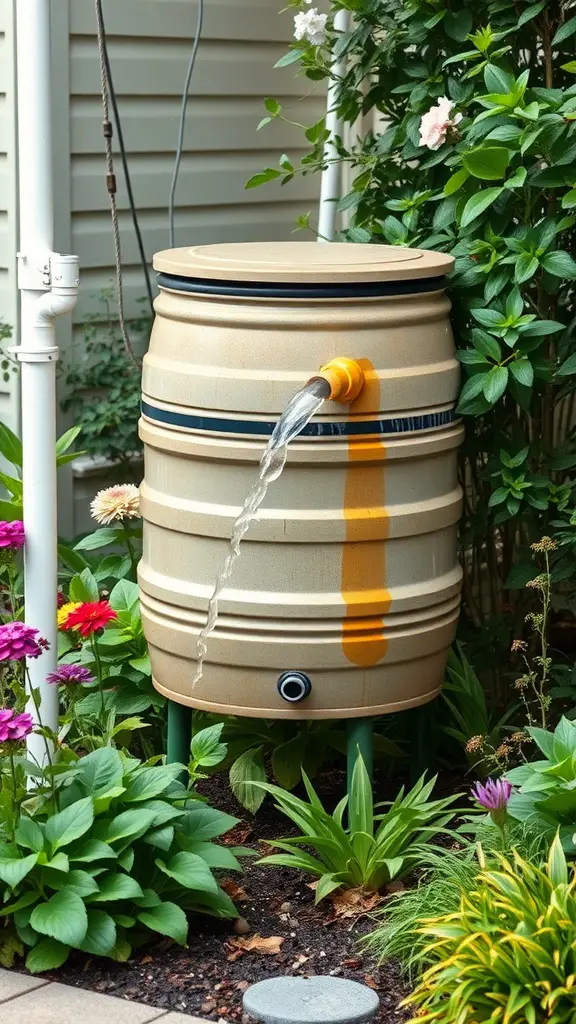
A rain barrel collection system is a smart way to make use of rainwater. This system collects rainwater from your roof and stores it for later use. The image shows a rain barrel set up in a lovely garden, surrounded by vibrant flowers and greenery.
In the picture, you can see a sturdy barrel positioned on legs, making it easy to access. The barrel has a bright orange spout where water flows out, ready to be used for watering plants or other needs. The clever design allows for easy filling and dispensing, ensuring you can make the most of every drop of rain.
By implementing a rain barrel collection system, you not only save water but also contribute to a more sustainable garden. It’s an effective way to reduce runoff and manage drainage, especially during heavy rains. Besides being practical, this setup adds a touch of charm to your outdoor space.
Permeable Paving Solutions
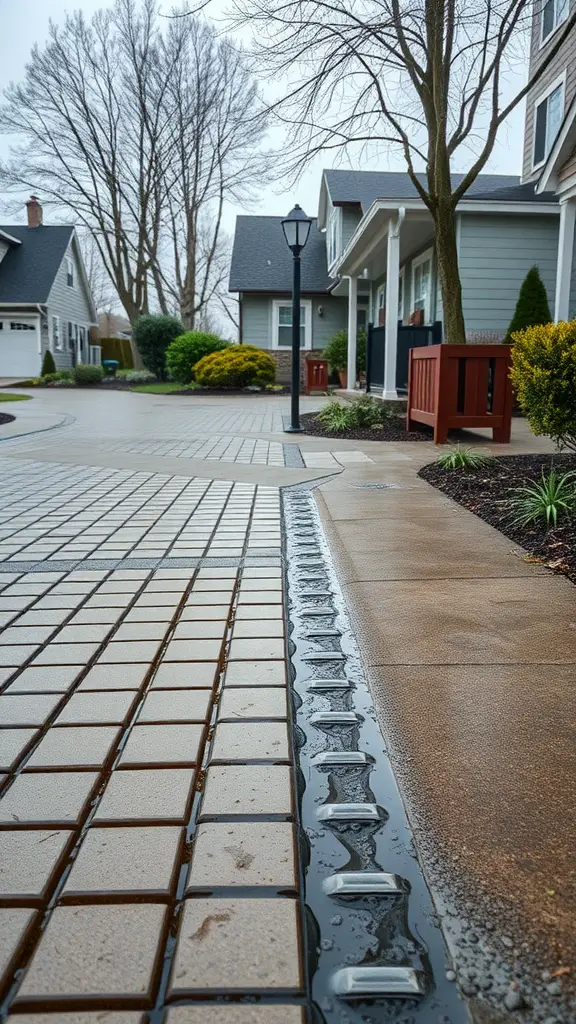
In the quest for efficient gutter drainage, permeable paving is a fantastic option. The image showcases a stylish driveway designed with permeable pavers. These pavers allow water to seep through, reducing runoff and helping to manage stormwater.
The layout seen here not only serves a practical purpose but also enhances the aesthetic appeal of the space. The mix of textures and colors can complement any home design, making it a popular choice among homeowners.
By integrating permeable paving into your driveway or walkway, you promote water absorption into the ground, which can be beneficial for the surrounding plants. This method helps replenish groundwater and minimizes the risk of flooding.
Additionally, it’s a low-maintenance option that can last for years with proper care. Overall, permeable paving solutions represent a smart choice for those looking to improve drainage while keeping their outdoor spaces attractive.
Gutter Guards to Prevent Clogs
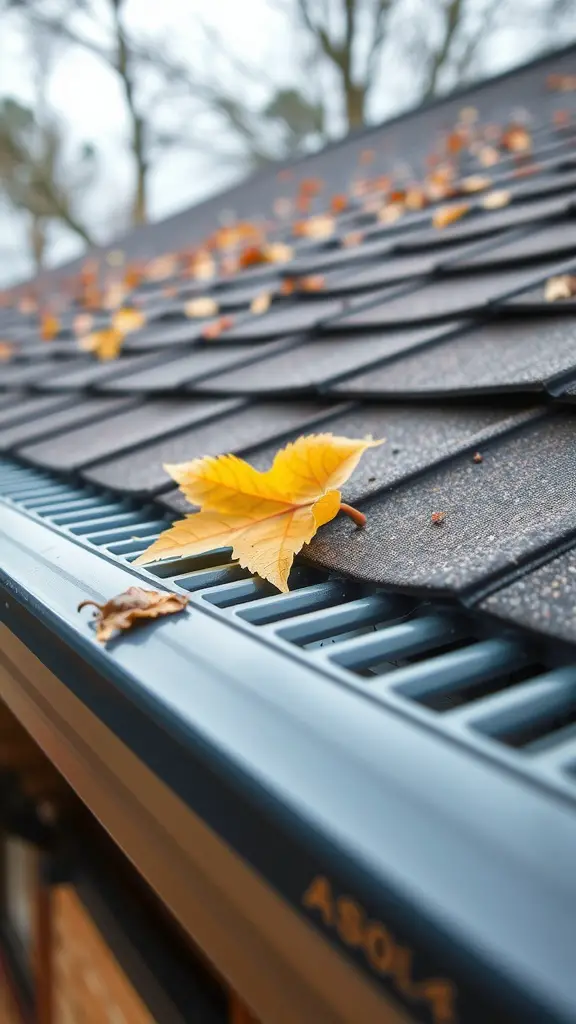
Gutter guards are a smart addition to any home, especially as the seasons change and leaves begin to fall. The image shows a close-up of a gutter with some fallen leaves resting on its surface. This visual highlights the common challenge homeowners face: clogged gutters.
By installing gutter guards, you can significantly reduce the number of leaves and debris that enter your gutter system. These guards act like a protective barrier, allowing water to flow through while keeping larger items out. This helps prevent clogs, which can lead to serious water damage to your home.
Additionally, gutter guards save you time and effort. Instead of having to clean out your gutters multiple times a year, you can enjoy peace of mind knowing they are less likely to get blocked. This means less ladder climbing and more time enjoying your home.
When choosing the right gutter guard, consider materials and designs that suit your roof and local climate. For instance, mesh guards can be great for trapping smaller debris while allowing water to flow freely. Whatever your choice, remember that protecting your gutters can also protect your home.
Channel Drain for Patios
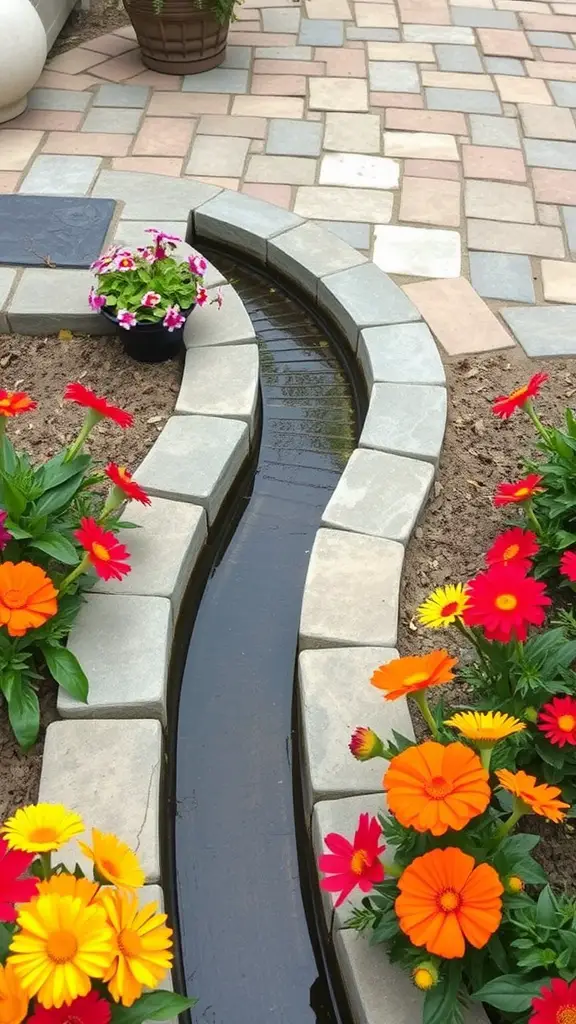
Channel drains are a smart choice for patios, especially when you’re looking to manage rainwater effectively. In the image, you can see a beautifully designed channel drain winding through vibrant flowers. This setup not only serves a practical purpose but also enhances the patio’s aesthetic appeal.
The combination of the gray stones and the lively blooms creates a picturesque scene. The channel drain effectively collects runoff water, helping to prevent pooling that can damage your patio over time. Plus, it’s a neat way to add a functional element to your outdoor space.
When planning your patio drainage, consider how the channel will fit into your design. You can make it a focal point or blend it in with your landscaping. Either way, it’s a practical solution that keeps your space looking tidy and well-maintained.
Downspout Extensions for Dispersal
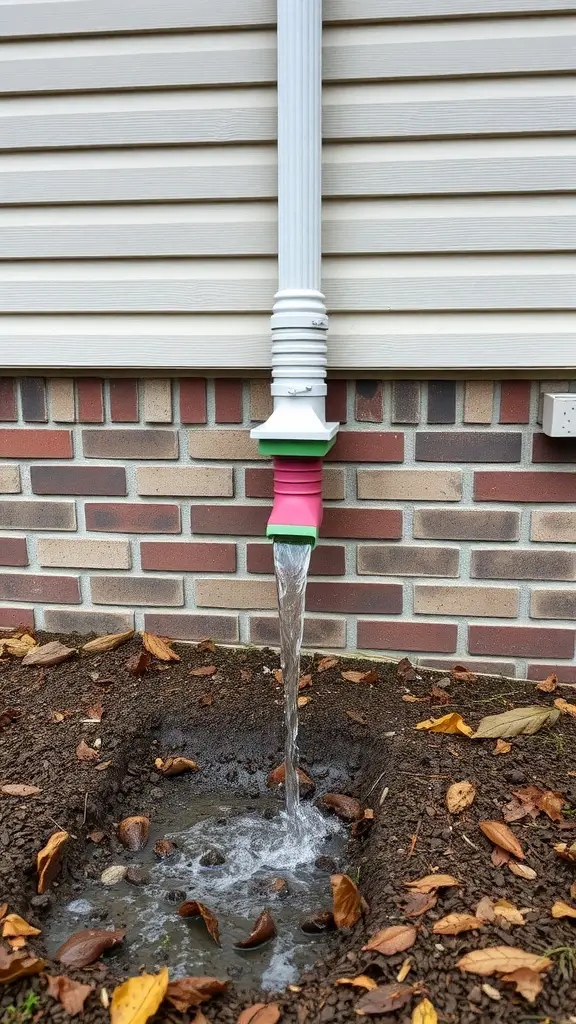
When it comes to managing rainwater, downspout extensions are a simple yet effective solution. The image shows a downspout connected to a vibrant extension that directs water away from the foundation of a home. This is crucial for preventing water damage and erosion around your property.
The bright colors of the extension not only add a fun touch but also help in visually identifying the drainage system. This makes it easier to maintain and ensure it is functioning properly. The water is being funneled into a small trench, which allows for proper dispersal into the surrounding soil.
Incorporating downspout extensions can significantly improve the drainage system in your yard. By directing water away from your home’s foundation, you reduce the risk of flooding in your basement or crawl space. This simple addition can save you from costly repairs down the line.
Additionally, the placement of the extension matters. It should lead the water to an area where it can either soak into the ground or flow into a designated drainage path. This way, you can keep your landscaping healthy and avoid pooling around your property.
French Drain Installation
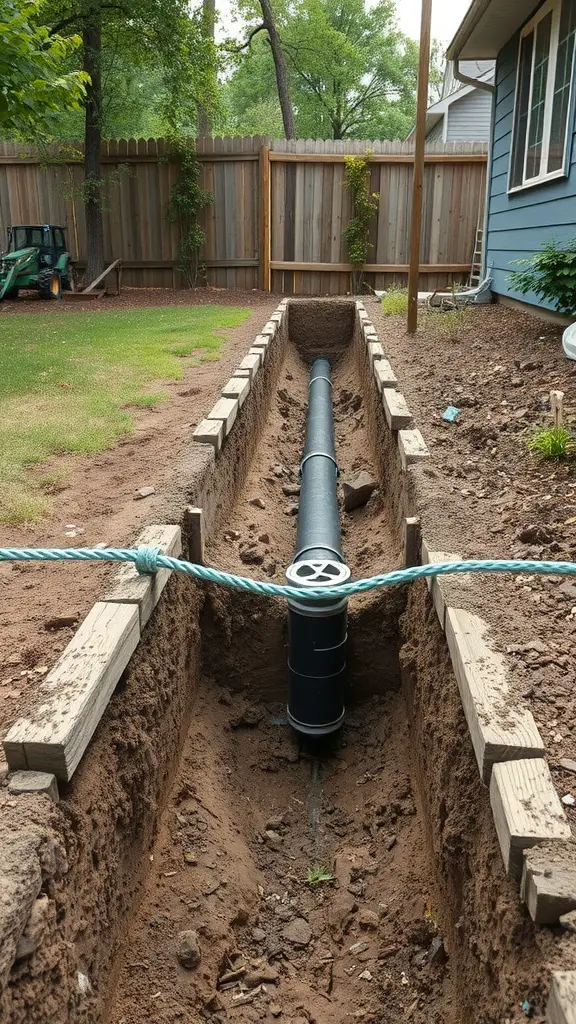
Installing a French drain is a smart way to manage water drainage in your yard. The picture shows a trench that has been dug, ready for the black drainage pipe to be placed inside. This setup helps to direct water away from your home and prevent flooding in your yard.
The trench looks well-prepared, with wooden boards lining the edges. This not only keeps the sides from collapsing but also gives it a neat look. The pipe is crucial for collecting and redirecting water, and the visible valve suggests it’s designed for easy maintenance.
After laying the pipe, you would typically cover it with gravel and soil, which helps filter out debris while allowing water to flow freely. It’s important to ensure the slope of the pipe is correct to facilitate proper drainage.
Dry Well for Stormwater Management
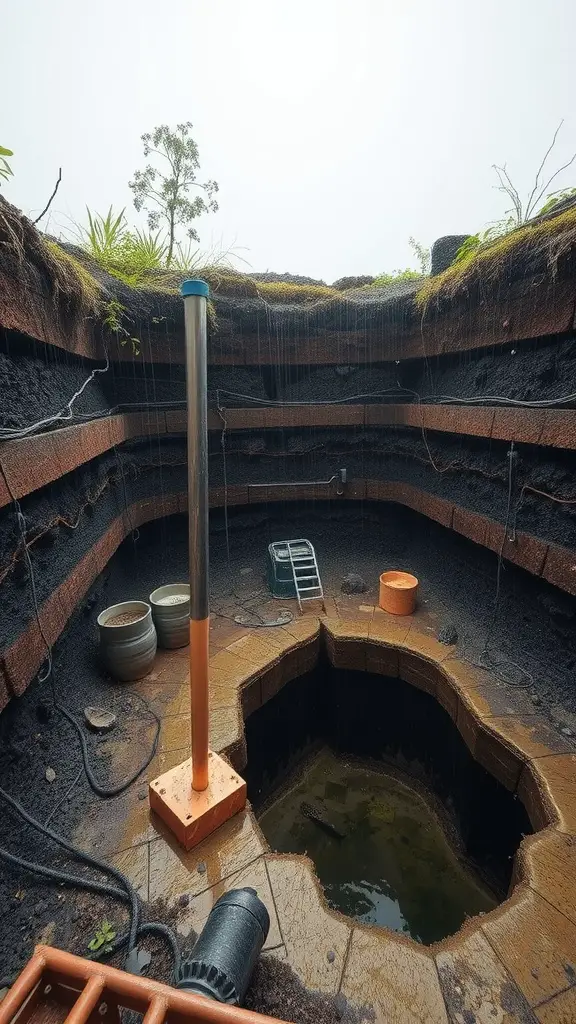
A dry well is a clever solution for managing stormwater. It allows water from rain or runoff to seep into the ground slowly, reducing surface flooding. The image shows a well-constructed dry well, with a circular shape that promotes better drainage.
The sides of the well are lined with materials that help filter the water, ensuring that it doesn’t carry pollutants into the soil. You can see some greenery around the edge, which indicates that the area is integrating with the natural environment. Plants help absorb excess moisture, making this a sustainable choice.
This design not only helps in stormwater management but also enhances the landscape. The well in the image has a clean, organized look, with the surrounding area free from debris. This setup can significantly lower the risk of water pooling in your yard after heavy rains.
By installing a dry well, homeowners can effectively manage their gutter drainage while contributing positively to the ecosystem. It’s a simple yet effective way to ensure that your property remains dry and your garden flourishes.
Underground Drainage Pipes
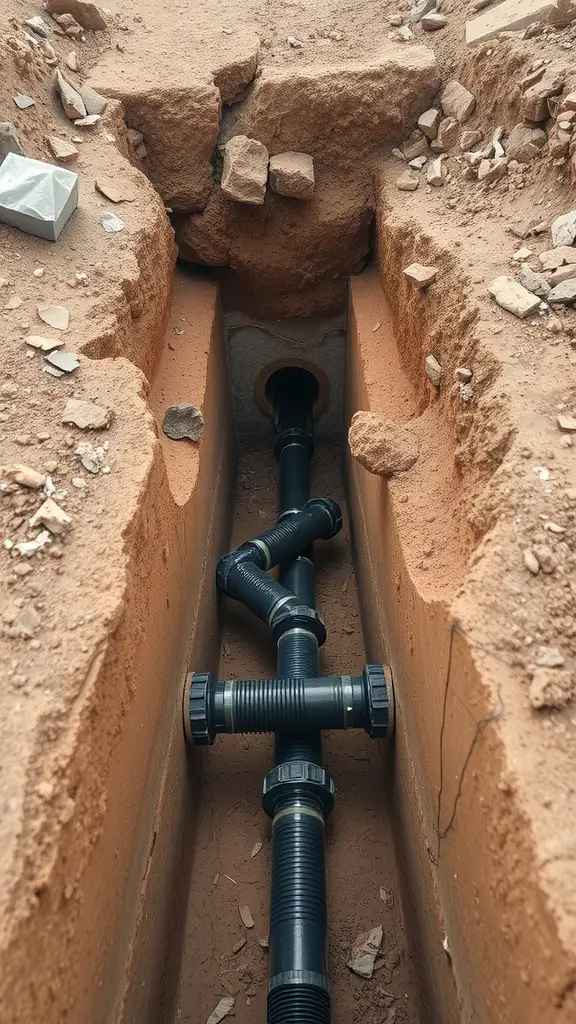
When it comes to managing water around your property, underground drainage pipes are key players. These pipes help transport excess water away from foundations, preventing unwanted flooding and soil erosion.
The image shows a trench where underground drainage pipes have been laid out. The pipes are black, made from durable materials, and fitted together with connectors. This setup ensures a smooth flow of water, minimizing blockages.
Installing underground drainage is an effective way to protect your yard and home. It keeps water off your lawn, allowing for healthier grass and plants. Plus, it can enhance your property’s overall appearance since surface drainage solutions can often be bulky and unsightly.
To install these pipes, you’ll want to dig a trench at a slope that allows water to flow naturally. This usually means a drop of about one inch for every eight feet of pipe. Adding gravel to the bottom of the trench can also improve drainage and prevent clogging.
Bioswales to Filter Runoff
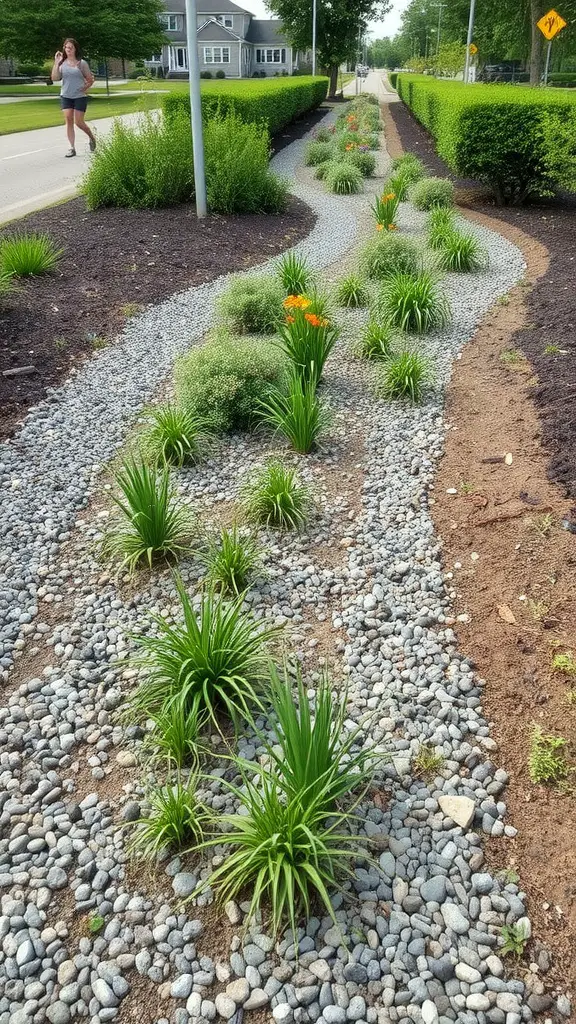
Bioswales are a smart way to manage stormwater while enhancing the beauty of your landscape. They are designed as shallow, vegetated channels that help filter and absorb runoff from rain. In the image, you can see a well-structured bioswale lined with gravel and a variety of plants. This setup not only looks appealing but also serves a practical purpose.
The arrangement of plants along the bioswale is strategic. Different species can handle varying amounts of water and soil types, which maximizes the bioswale’s efficiency. The colorful flowers mixed with green foliage create a vibrant scene. This approach not only improves drainage but also supports local wildlife and biodiversity.
In addition to their function, bioswales can be a lovely feature in urban areas. They can help reduce flooding and improve water quality by filtering pollutants. Plus, they provide a natural aesthetic that can soften the hard edges of concrete and asphalt. Whether you’re looking to enhance your yard or your community, bioswales are a helpful addition.
Gutter System with Leaf Blower
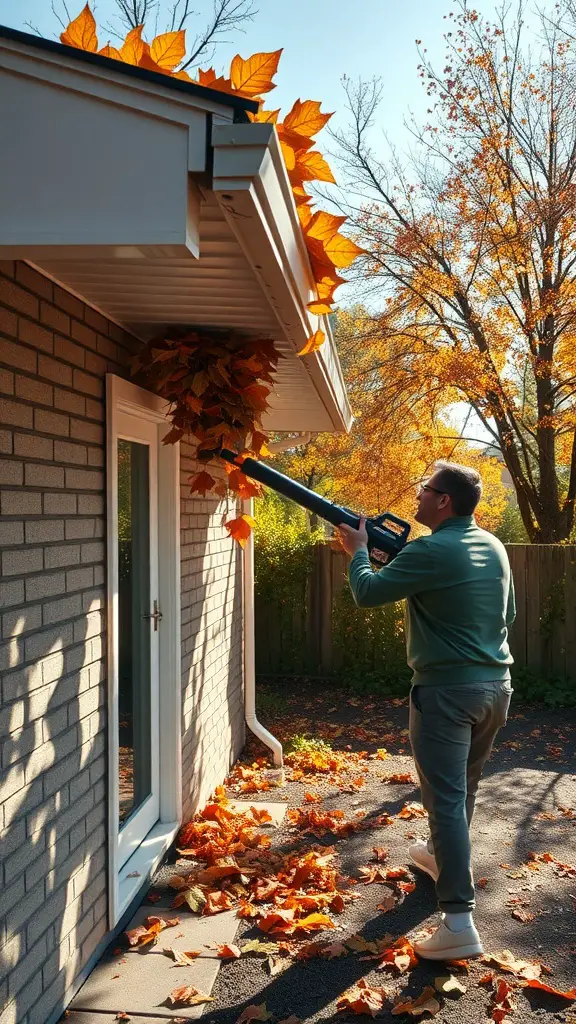
Cleaning gutters can often feel like a chore, especially when they’re overflowing with leaves and debris. In the image, we see a person using a leaf blower to clear out their gutter system. This method is not only efficient but also saves time and effort compared to traditional methods.
The bright orange leaves highlight the beautiful autumn season, reminding us that regular maintenance is key. Using a leaf blower makes the task less messy and allows you to easily direct leaves away from the gutters.
By keeping your gutters clear, you protect your home from water damage and ensure proper drainage. It’s a straightforward way to maintain your gutter system without too much hassle.
Additionally, this approach can be combined with other gutter drainage ideas, making it versatile for various types of homes. So next time you see those leaves piling up, consider reaching for that leaf blower!
Waterproofing Foundation with Drainage
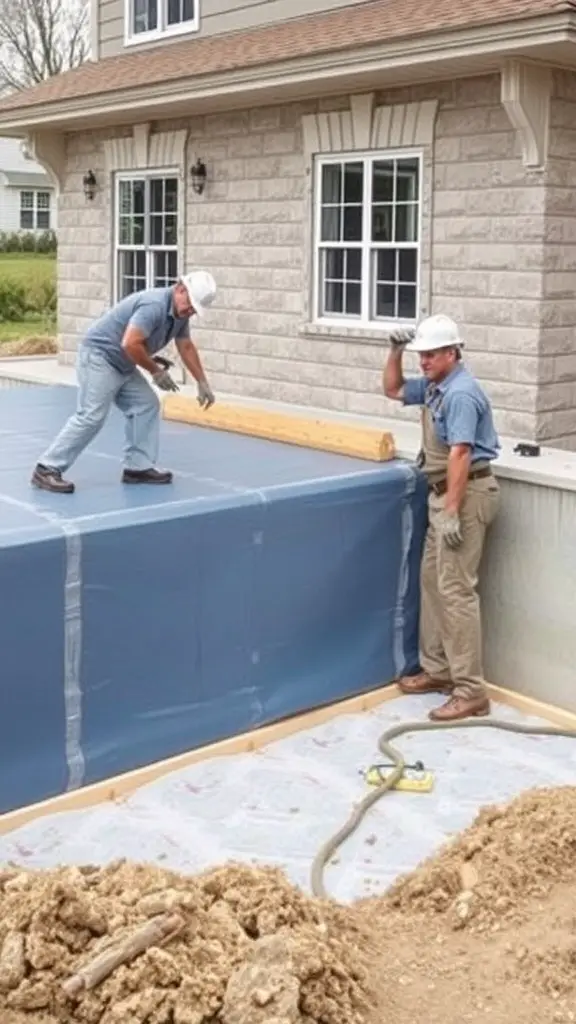
When it comes to protecting your home, waterproofing your foundation is key. The image shows two workers carefully laying down a protective layer for a foundation. They are using a blue membrane, which helps keep moisture out, ensuring that your basement remains dry.
Effective drainage is crucial in this process. By directing water away from the foundation, you can prevent issues like mold and structural damage. In the picture, you can see the preparation involved, with dirt and tools scattered around, highlighting the work that goes into ensuring a secure foundation.
Having the right drainage system in place will give you peace of mind. It’s not just about aesthetics; it’s about preserving the integrity of your home. So, whether you’re building new or renovating, consider the importance of these waterproofing methods.
Rain Garden for Habitat Creation
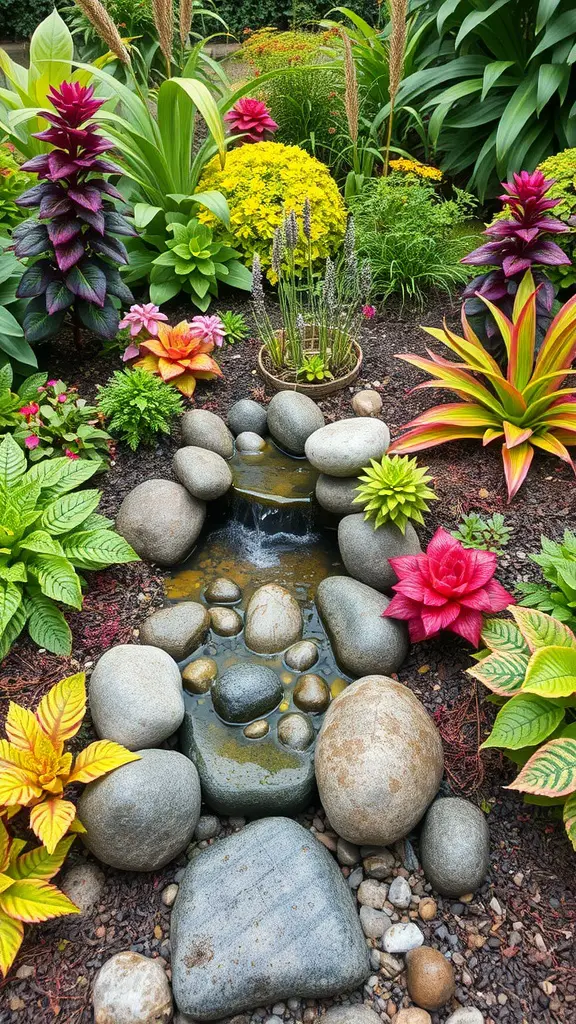
Creating a rain garden is a fantastic way to manage rainwater while providing a habitat for local wildlife. The image of a vibrant rain garden showcases how beauty and functionality can coexist. The natural elements, like stones and plants, come together to form an inviting environment.
This specific rain garden features a charming arrangement of colorful foliage, with lush greens and bright flowers. The rocks guide the water flow, helping to prevent erosion while nurturing the surrounding plants. It’s not just about aesthetics; it’s about making a space that supports biodiversity.
By incorporating native plants, you encourage butterflies, bees, and other beneficial insects to thrive. This garden design not only absorbs rainwater but also creates a lively ecosystem. Imagine sitting by this peaceful spot, listening to the gentle trickle of water, and watching nature flourish. Rain gardens like this are a wonderful addition to any landscape.
Gravel Drainage Bed Installation
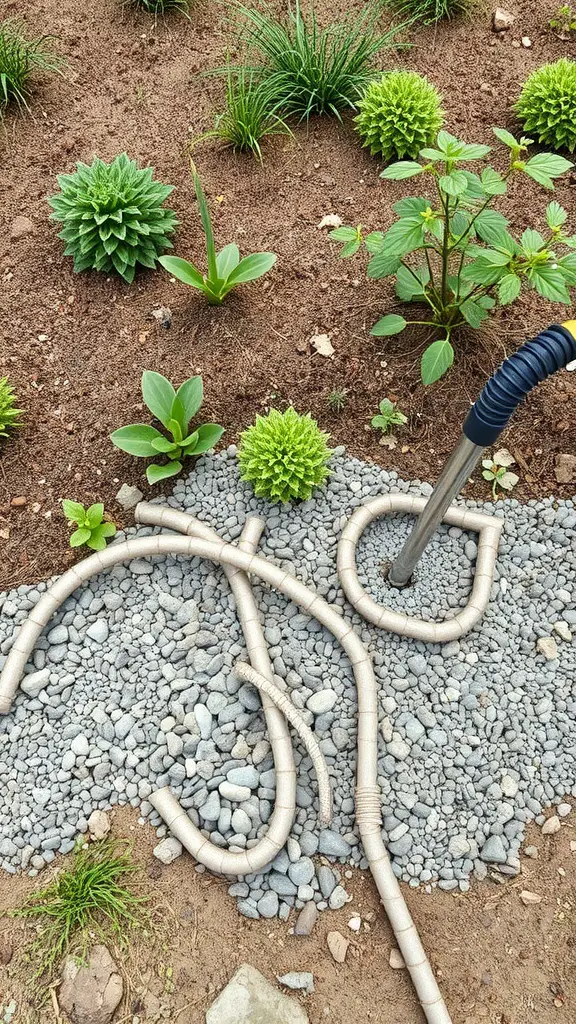
Creating a gravel drainage bed is a smart way to manage water runoff in your yard. The image shows a setup that highlights how to arrange the gravel and drainage pipes effectively. You can see the light-colored gravel spread out evenly, which allows water to flow through easily, preventing pooling.
The pipes, visible in a coiled pattern, are crucial for directing excess water away from areas where it can cause problems. These pipes help channel water away, ensuring your plants and landscaping stay healthy. Maintaining proper drainage is essential for avoiding muddy spots and maintaining a neat appearance.
As you install your gravel drainage bed, consider the slope of your yard. A slight incline can help direct water naturally towards the gravel area. This setup not only serves a functional purpose but also integrates well with your garden design. You can plant around the gravel to enhance the aesthetic appeal while ensuring that water is effectively managed.
Cisterns for Water Storage
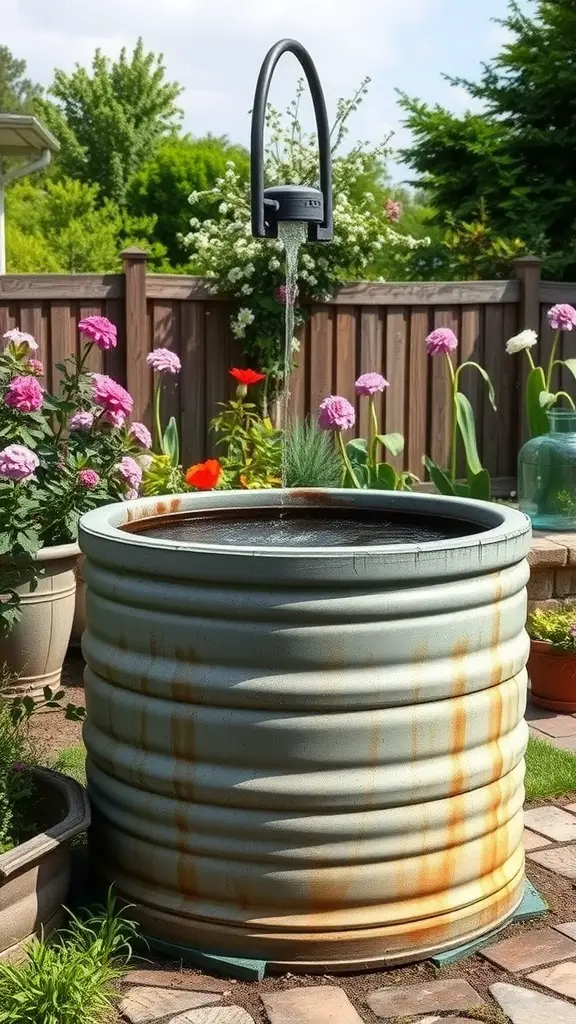
Cisterns are a practical solution for managing rainwater. They are designed to collect and store water for later use, which can be especially beneficial during dry spells. The image shows a charming cistern in a garden setting, surrounded by vibrant flowers and greenery.
The design of the cistern in the image features a curved, ribbed exterior, giving it a rustic look. This not only adds character to your garden but also serves a functional purpose. The mounted faucet on top allows for easy access to the stored water, making it convenient for watering plants or other uses.
Using a cistern helps conserve water and reduces reliance on municipal sources. You can collect rainwater from your roof, redirecting it through gutters into the cistern. This simple system can save you money on water bills and contribute to a more sustainable lifestyle.
When considering a cistern, think about the size based on your garden’s needs. Smaller models are great for limited space, while larger ones can accommodate more water for extensive gardens. With a little creativity, you can integrate a cistern seamlessly into your outdoor decor.
Swale Creation for Water Flow
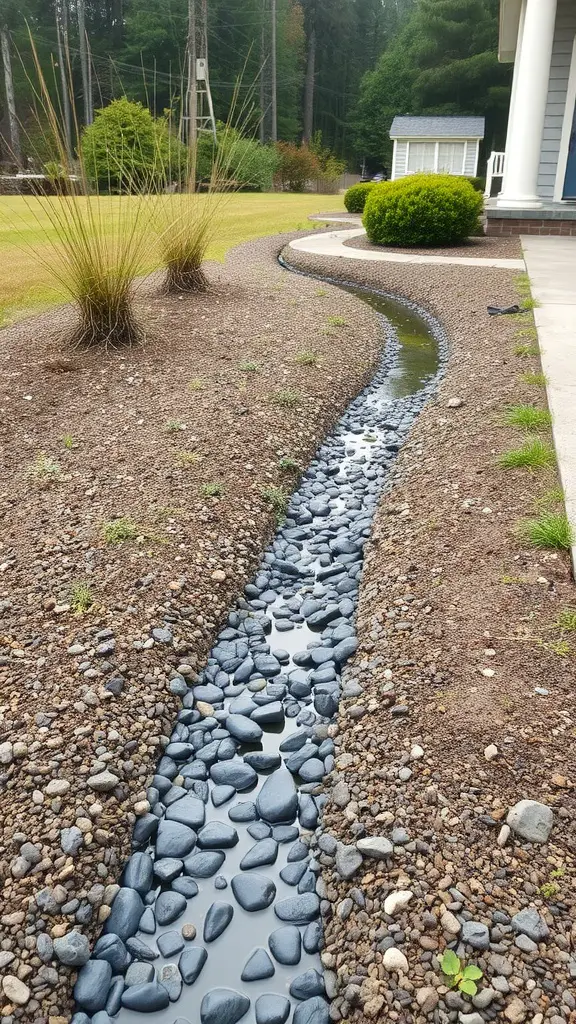
Creating a swale is an effective way to manage water flow in your yard. This image shows a beautifully designed swale that naturally directs rainwater away from structures and toward areas where it can be absorbed.
The swale in the picture is lined with smooth stones and gravel, which helps to slow down the water flow. This technique prevents erosion and allows the water to soak into the ground instead of pooling.
Notice how the swale curves gently through the landscape, blending in with the surrounding plants. This not only serves a practical purpose but also adds an aesthetic element to the yard. Plants near the swale can further assist in water absorption, making it a functional and attractive feature.
When designing your own swale, consider the natural slope of your land. You want to create a channel that follows this slope to effectively guide the water flow. Adding native plants along the edges can enhance the beauty and sustainability of the area.
Slope Grading for Effective Drainage
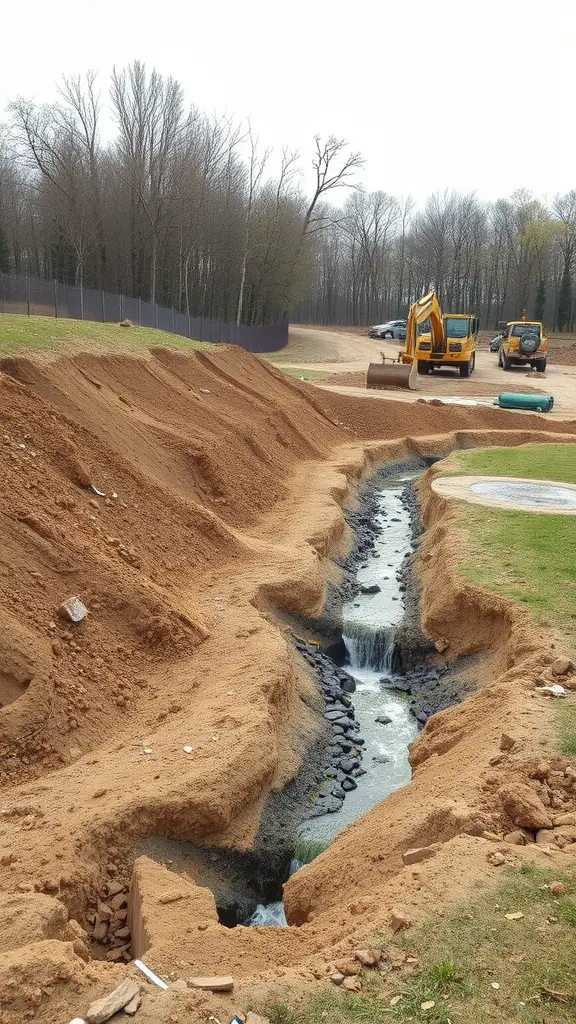
Slope grading is essential for effective drainage in any landscape. The image shows a well-excavated drainage channel, ready to guide water away from areas where it could cause damage. This is the foundation of a solid drainage system.
Notice how the channel is formed with a natural slope. This design allows water to flow smoothly, preventing pooling and potential flooding. The sandy soil visible here provides good drainage, which is key to keeping your yard healthy.
In the background, construction vehicles are at work, emphasizing that proper drainage requires planning and effort. Such setups ensure that excess rainwater is diverted away from foundations and grassy areas, helping maintain a clean and dry landscape.
Creating a slope isn’t just about digging a channel; it also involves considering the surrounding terrain. You must ensure that the slope directs water toward a safe outlet, like a storm drain or a natural waterway. This step is crucial for long-term effectiveness.
Installing a Catch Basin
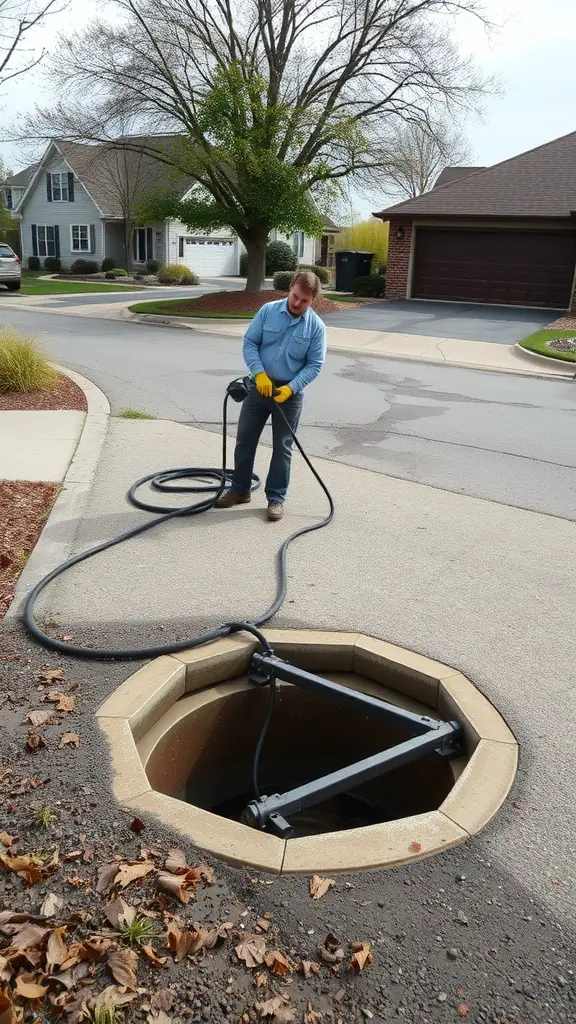
A catch basin is an essential component of efficient gutter drainage. It helps collect excess water and debris, preventing flooding and water damage in your yard.
In the image, you see a person preparing to maintain a catch basin. This involves using a hose to clear out any materials that may have built up inside. Regular maintenance is key to ensuring it functions well.
Installing a catch basin can be straightforward. First, choose a location where water tends to pool. Then, dig a hole and place the basin at the correct height. Connect it to your gutter system, ensuring the water flows smoothly into it.
After installation, make sure to check it periodically. Remove leaves and debris to keep the system working efficiently. A clean catch basin can save you from bigger headaches later!
Earth Berms to Redirect Water
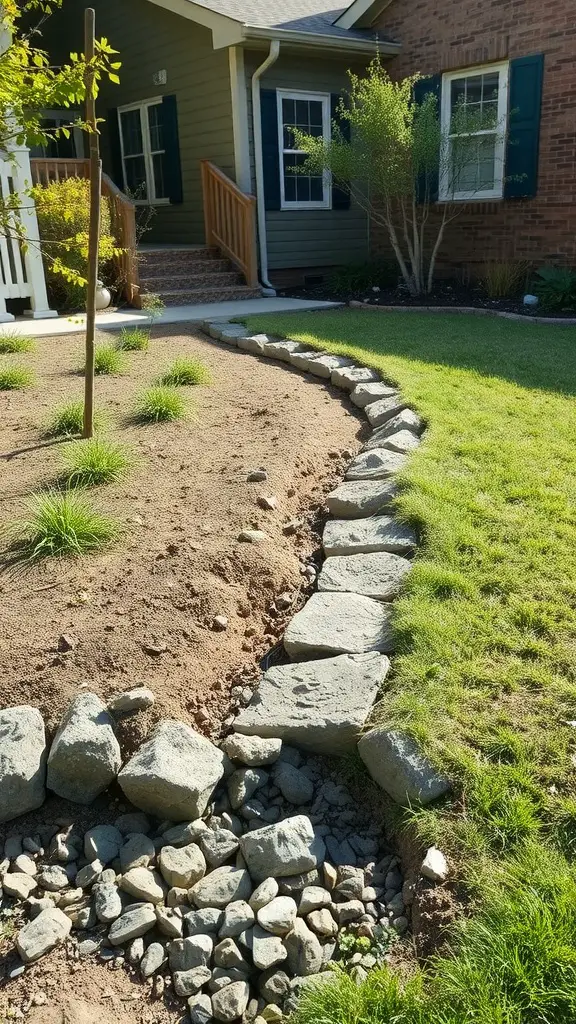
Earth berms are a practical and attractive way to manage water drainage in your yard. In the image, we can see a beautifully landscaped area with a curved path made of stones. This design not only serves an aesthetic purpose but also helps guide rainwater away from the foundation of the house.
The key to using earth berms is their ability to redirect water flow. By creating a slight elevation with soil or rocks, you can control where the water goes, reducing pooling and erosion. In the photo, the stones create a natural barrier that directs water toward a drain or a designated area.
This method is also eco-friendly, as it utilizes natural materials and blends seamlessly into your landscape. You can choose stones that match your garden style. Whether you’re looking to protect your home or just enhance your yard’s appearance, earth berms are a simple yet effective solution.
Using Vegetation for Natural Drainage
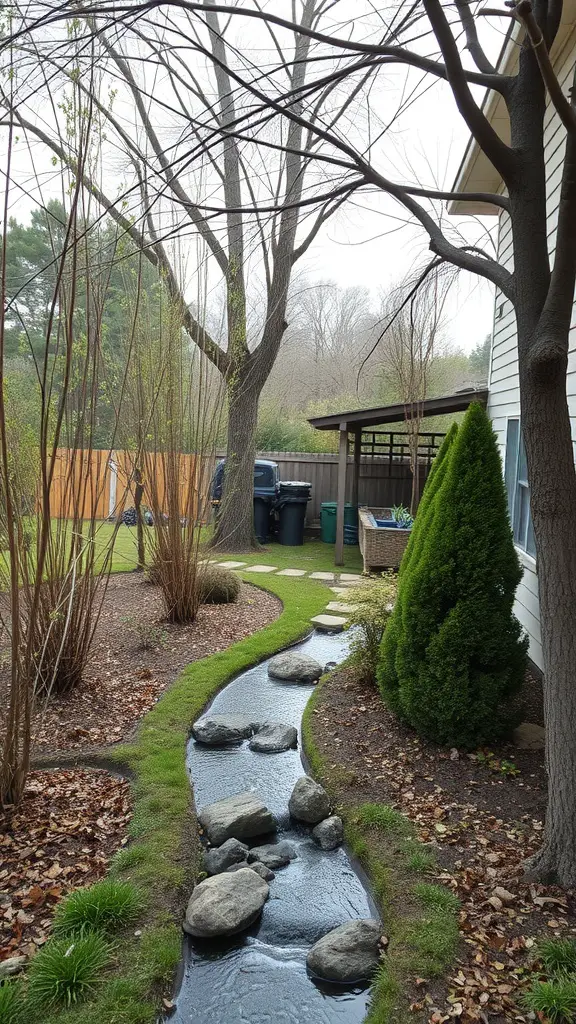
Incorporating vegetation into your gutter drainage system can be both practical and pleasing to the eye. The image above shows a charming landscape design that facilitates natural drainage. Instead of relying solely on traditional methods, plants can help absorb excess water, creating a more sustainable environment.
The gentle stream depicted weaves through the garden, showcasing how rocks and grass can work together to manage water flow. This kind of setup not only directs rainwater but also enhances the aesthetic appeal of your yard. The use of native plants can further improve this system by providing deep root structures that help with soil absorption.
Pulling in a variety of shrubs and grasses can create a lovely green buffer. This not only manages drainage but also contributes to biodiversity. With the right plant selection, your yard can become a habitat for local wildlife while effectively handling rainwater.
Remember, the key is to choose plants that thrive in wet conditions. Grasses, ferns, and certain flowering plants can not only beautify the area but also assist in managing drainage effectively. With a little creativity, you can make your garden both functional and inviting.
Decorative Drainage Solutions
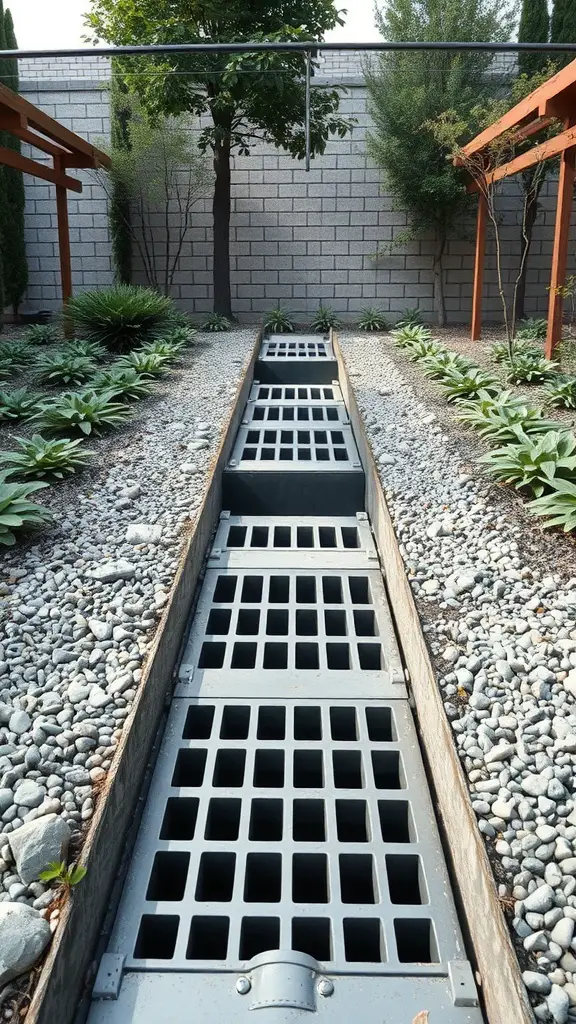
When it comes to gutter drainage, functionality is key, but that doesn’t mean you have to sacrifice style. The image above showcases a modern drainage system that effortlessly blends into the landscape, turning a simple necessity into a design feature.
The drainage channel is lined with an attractive grid that not only serves its purpose but also adds a sleek look to the outdoor space. Surrounding it, you can see beautiful greenery, pebbles, and wooden structures that enhance the overall aesthetic. This shows that effective drainage doesn’t have to be an eyesore; it can complement your garden.
Incorporating decorative elements like this can elevate your outdoor area. Whether you opt for decorative grates or stylish channel systems, there are plenty of options to ensure your drainage solutions fit seamlessly with your landscaping. It’s all about finding a balance between practicality and beauty.
Utilizing Rain Chains
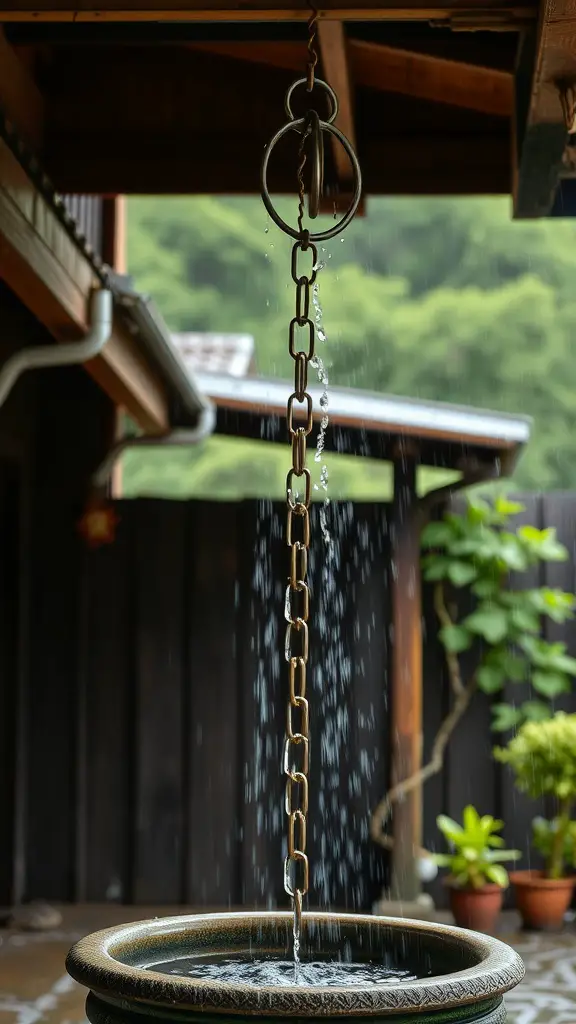
Rain chains are a charming alternative to traditional downspouts. They not only serve a practical purpose but also add an artistic touch to your outdoor space. The image shows a beautifully designed rain chain, with water cascading down in a soothing manner.
These chains guide rainwater from the roof to a basin or garden area below. The flowing water creates a peaceful sound, making it a lovely feature for any home. In addition, you can choose from various materials and styles to match your taste and landscaping.
Installing a rain chain is simple. Just replace your downspout with the chain and decide on a collection point, like a pot or a decorative basin. This setup helps in managing rainwater effectively while enhancing your garden’s look.
Gutter Maintenance for Longevity
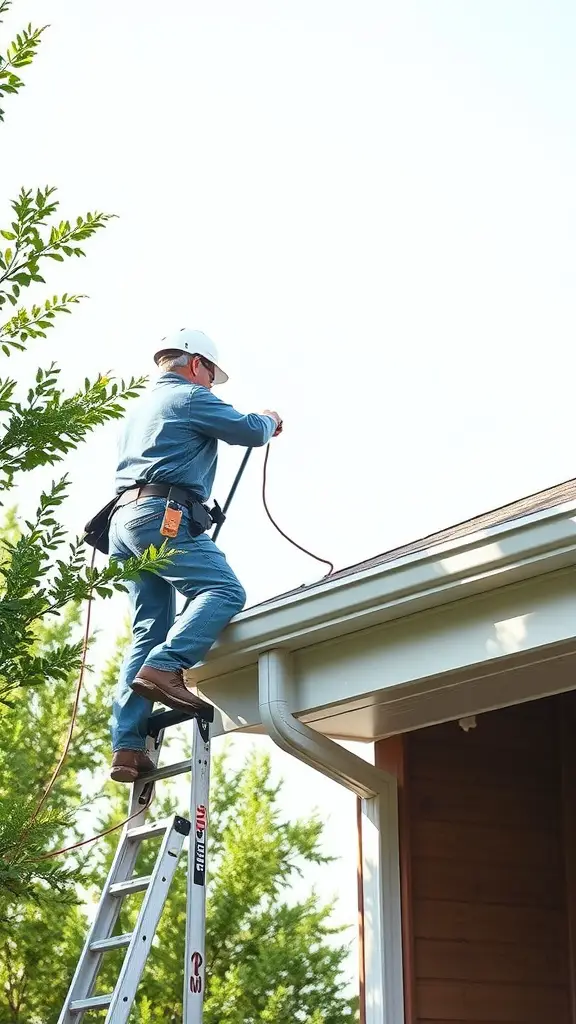
Gutter maintenance is key to keeping your home’s drainage system in tip-top shape. Regular upkeep can prevent clogs and ensure water flows freely away from your foundation. In the image, we see someone diligently working on a roof, making sure the gutters are clean and functional. This kind of hands-on maintenance is crucial.
It’s a good idea to check your gutters at least twice a year, especially during the fall when leaves tend to accumulate. The person in the image is on a ladder, equipped and ready to tackle any debris. It’s important to use a sturdy ladder and to prioritize safety while doing this work.
If you notice your gutters have become blocked, don’t wait too long to clear them out. Stagnant water can lead to rust, mold, and even damage to your home’s exterior. The individual in the photo demonstrates a proactive approach, which is the best way to ensure longevity.
Furthermore, consider installing gutter guards to reduce the frequency of cleaning. These can help catch larger debris while allowing water to flow through. That way, you can enjoy peace of mind during heavy rain.
Creating an Overflow Drain
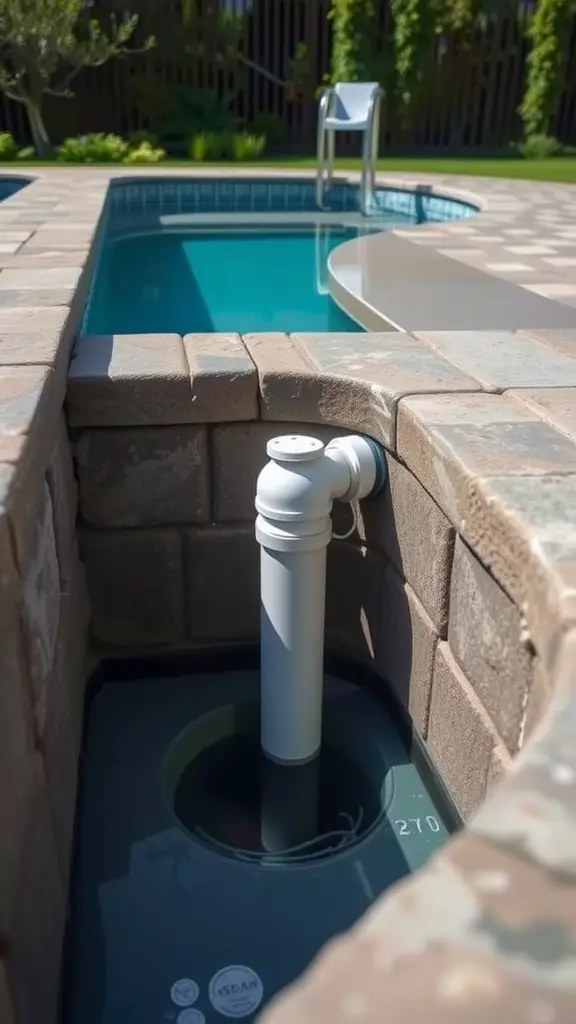
When it comes to managing water around your pool area, installing an overflow drain is a smart move. The image shows a clean, well-designed overflow drain that is both functional and aesthetically pleasing. This setup helps prevent water from pooling around your pool, keeping your outdoor space dry and safe.
The drain itself is nestled in a brick enclosure, blending in nicely with the surrounding materials. It’s designed to catch excess water and direct it away, which is especially helpful after heavy rains or during pool cleaning. By using materials that match your pool’s design, you can ensure that the drain isn’t just useful, but also enhances the overall look of your space.
Regular maintenance of the overflow drain is essential. Make sure to check it periodically for any blockages or debris that could impede its function. A little upkeep goes a long way in keeping everything flowing smoothly and protecting your pool area from water damage.

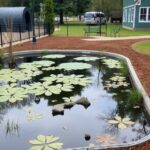
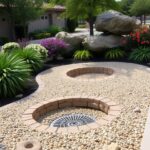
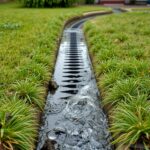

Why do so many of these images look ai created? The leaf blower and the cistern photos specifically